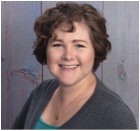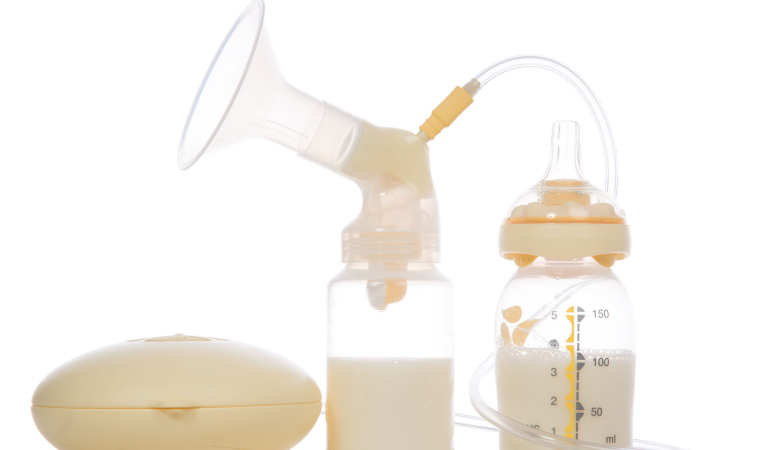Dr. Krystal Richardson, ND
@NaturopathicFam
Proper storage of breast milk is important to keep bacteria from growing and making your little one sick. It is also important to store breastmilk appropriately to maximize all the good properties that are in the milk, like antibodies and immune-boosting cells. One avenue that exposed breastmilk to contamination is thawing and re-freezing. It is important that thawed milk not be refrozen! For this reason, it is typically easier to store and package smaller, individual amounts of milk in the freezer. This way you are only taking out what you need at the time. Another important tip to know is to never thaw frozen milk in the microwave. Using the microwave can kill those needed immune boosting properties of the milk. To thaw breastmilk, it is always better to put it in the refrigerator or use a warm water bath. It is okay to keep the milk a baby doesn’t finish in one feeding in the refrigerator for use later that SAME day. Breast milk can also be reheated, but only once (of course it is best to not have to at all). Each time it is heated more of the beneficial components that your little one needs are broken down. In general, a good rule of thumb is to not keep breast milk that has been thawed or reheated for more than 24 hours.
Additional tips on storing breastmilk:
- To decrease exposure to bacteria: make sure all milk collection equipment is cleaned in hot soapy water and rinsed thoroughly after each use. Ideally, it should be sterilized once a day by boiling it in water for 15 to 20 minutes.
- Containers that work best are glass (Pyrex), but these can be more expensive. An alternative is hard plastic (polypropylene), but be sure it is BPA (bisphenol A) free as this can be harmful to an infant’s development. Soft plastic can leak and can increase the breakdown of proteins and cells in the milk.
- Label the containers with date and time of collection. If you are not going to be giving the pumped milk to baby within 4 hours it needs to be kept refrigerated.
- Best storage methods and temperature ranges include: If kept at room temperature (77 to 79F) needs to be used within 4 hours
- If kept at room temperature (77 to 79F) needs to be used within 4 hours
- If kept in refrigerator (35 to 40F) needs to be used within 4 to 48 hours
- If kept frozen (0 to 4F) needs to be used within 48 hours to 3 months
- The milk should be gradually warmed to about 98F in a warm water bath. The milk should not be in warm water bath for more than 20 to 30 minutes before use. Avoid reheating the milk. If some of the fat has separated out of the milk then gently shake/mix milk before feeding to baby.
In conclusion, being a new mom/parent is full of learning new things. Breastfeeding is one of those new things and it sometimes takes a while to figure out all the details. One of those details that a new breastfeeding mom has to learn is how to handle breastmilk storage. Learning proper storage techniques ensures that your little one gets all the beneficial properties breastmilk has to offer and is not going to be exposed to any harmful bacteria.
Please note that if you are ever questioning the safety of the breast milk or do not know its storage details you should not give the milk to your infant. Lastly, you should never hesitate to talk to your doctor or a lactation consultant if you have any questions concerning breastfeeding or breastmilk storage.
 Dr. Krystal Richardson is a naturopathic doctor who is an expert in integrative medicine. She is passionate about family medicine and enjoys working with all ages. She believes in creating a relationship with her patients that focuses on a partnership where patient and doctor can work together towards achievable goals.
Dr. Krystal Richardson is a naturopathic doctor who is an expert in integrative medicine. She is passionate about family medicine and enjoys working with all ages. She believes in creating a relationship with her patients that focuses on a partnership where patient and doctor can work together towards achievable goals.
While pursuing a medical degree at Bastyr University, Dr. Richardson pursued advanced training and education in women’s health, pediatrics, cardiovascular wellness and diabetes care. Dr. Richardson’s greatest joy comes from working with the pediatric population and encouraging healthy habits early, but also believes that achieving a better place of health is possible at any age.
Dr. Richardson has been used as an expert for care.com and has had articles published in the Naturopathic Doctor News & Review. In addition to writing she enjoys being an active member of her community and has participated in many fundraising and community events.
Reference:
Abrams, Steven A. Hurst, Nancy M. “Breast milk expression for the preterm infant.” UpToDate. Accessed 1/14/15. http://www.uptodate.com/contents/breast-milk-expression-for-the-preterm-infant
Health tip: Learning the proper breastmilk storage techniques help ensure your infant is getting the proper nutrition and immune boosting properties from the milk they need.

















